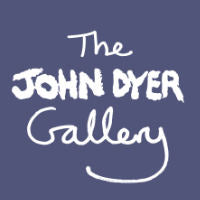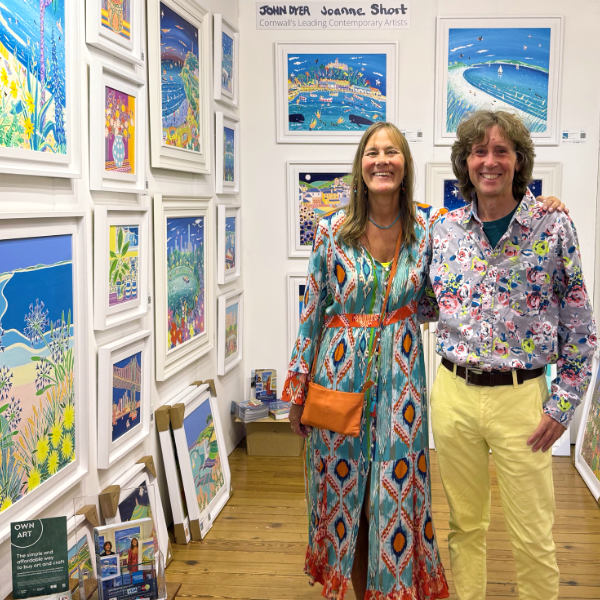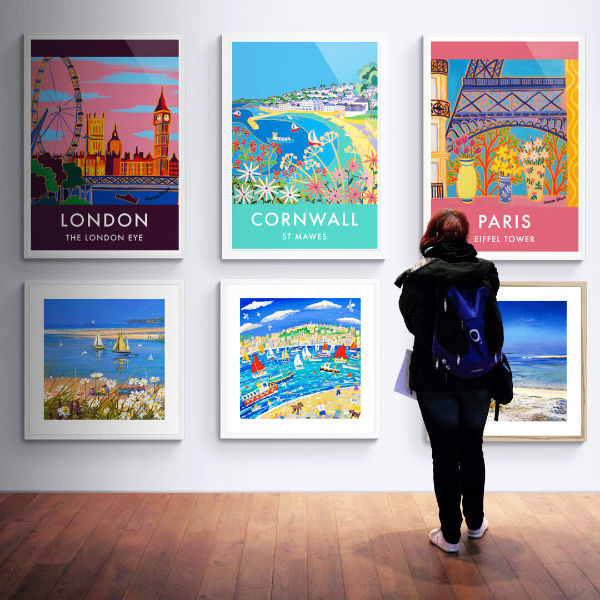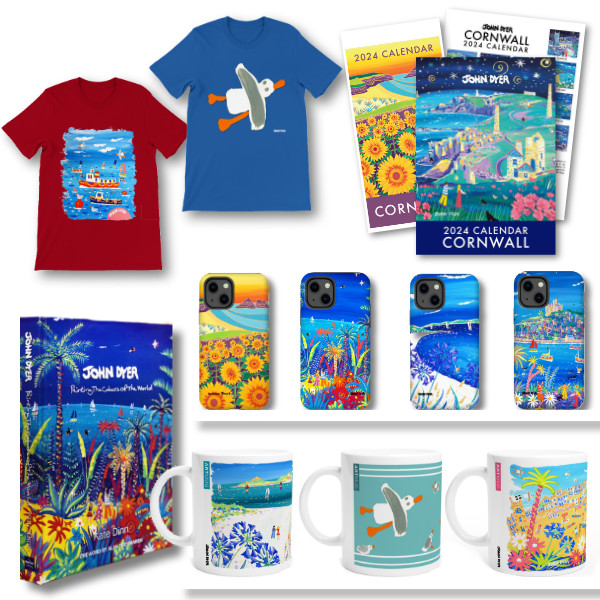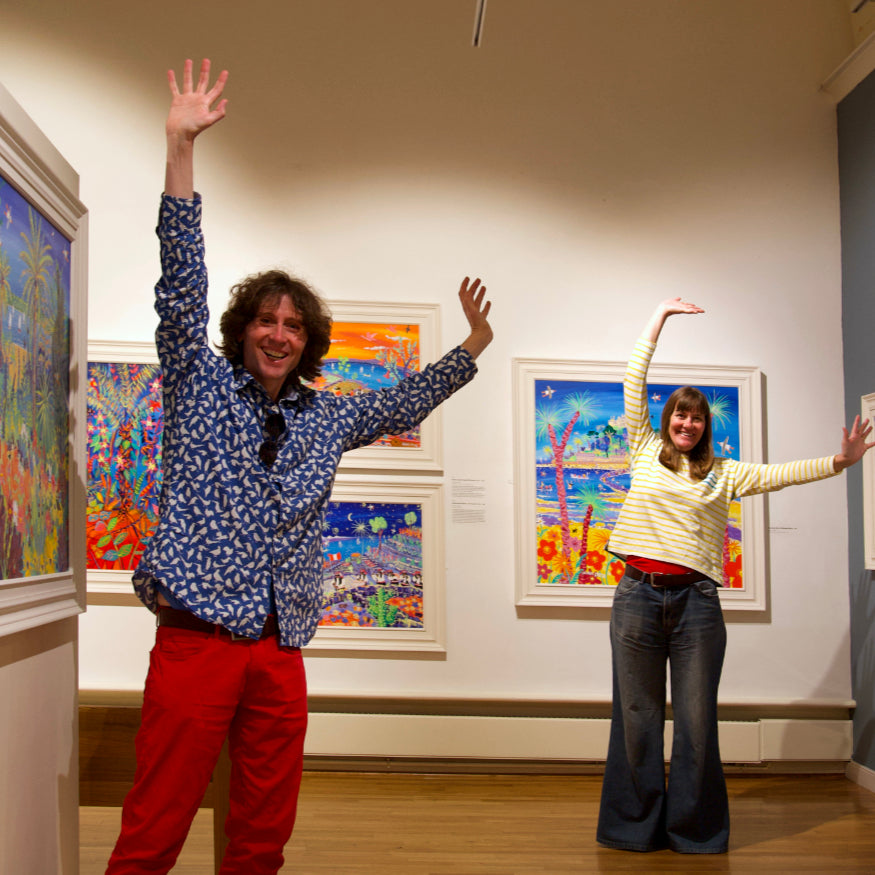Invest in British Art from Cornwall's Leading Artists | Free Worldwide Delivery
JOHN DYER
Original Paintings
New paintings available to buy online now by Cornwall's best loved artist.
JOANNE SHORT
Original Oil Paintings
New paintings available to buy online now by Cornwall's acclaimed colourist painter.
TED DYER
Original Oil Paintings
New paintings available to buy online by Cornwall's best known impressionist artist.
All Original Paintings
View all of the new original paintings that we have available to buy online now in our online gallery.
The ones you missed
View all of the recently sold original paintings by our Cornish artists John Dyer, Ted Dyer and Joanne Short.
Cornwall Art Prints
Museum-quality prints. Framed, Unframed, Signed & Wall Art Posters
September 5th - 7th 2025
Untitled Art Fair Chelsea, London
We will be exhibiting at the prestigious Untitled Art Fair, in Chelsea Old Town Hall.
June 6th - 8th 2025
St Ives Summer Exhibition 2025
New paintings by John Dyer & Joanne Short in the historic Porthmeor Studios in St Ives.
Christmas Exhibition 2024
A beautiful collection of new paintings by John Dyer & Joanne Short in the historic Porthmeor Studios in St Ives.
Explore our Previous Exhibitions
Enjoy exploring our previous exhibitions online and discover extraordinary paintings you can own today.
Press Coverage and Testimonials
Art Collectors Club.
Enjoy 5% off your first order, regular offers, exclusive exhibition invitations and artist and gallery updates in our monthly email newsletter.
Discover the incredible art of British artist John Dyer. The artist is famous around the world for his optimistic and fun-packed colourful naïve paintings.
Naïve art is an art that is characterized by its childlike simplicity and apparent lack of sophistication. Naïve art is often created by untrained artists who are not aware of the conventions of art. This type of art is often seen as simple and unsophisticated, but it is more often charming and beautiful and pushes the boundaries of modern art. Naive art has a certain innocence and purity that is very appealing to viewers and art collectors all over the world.
Naive art has been around for centuries but gained popularity in the 20th century as an alternative to more traditional art styles. Naïve artists often have little formal training and instead rely on their own observations and imagination to create their work. This can result in paintings that are childlike or even primitive in appearance, but which also have a certain charm and uniqueness. Naïve art can be found in many different countries and cultures and has been used to depict everything from daily life to religious subjects.
Although naïve art may seem simple, it can actually be quite complex. Naïve artists often use bold colours and exaggerated forms to make their paintings more expressive. They may also incorporate elements of folk art or popular culture into their work, giving it a distinctive flavour. Naive art can be both amusing and thought-provoking and is often appreciated for its fresh and original approach. and is often enjoyed for its charm and originality.
Naïve art can also be known as outsider art, primitive art, self-taught art, or folk art, and refers to artistic expressions with little or no formal training. The artworks are often created from cultural influences within the artist's own community, family, tribe, or nation. John Dyer has personally studied this with the Yawanawá tribe in the Amazon rainforest.
Naïve artists often have little or no contact with the mainstream art world, and as such their work is often disregarded or even reviled by the art establishment. However, there is a growing appreciation for outsider art, and it is now recognized by a number of institutions and collectors.
One of the most famous outsider artists was Henri Rousseau, who was self-taught and had no contact with the mainstream art world. His work was often ridiculed by the art establishment, but it is now recognized as some of the most important and influential art of the 20th century.
Outsider art can be found in a wide variety of media, including painting, sculpture, photography, folk art, and even digital art. It is often characterized by its use of unconventional materials, its raw and emotive expressiveness, and its disregard for traditional artistic conventions.
Naïve art is a fully recognized art genre and self-taught artist, John Dyer, is Cornwall's best-known artist and one of the UK's most famous naïve artists. His paintings and art prints are some of the most popular in the world.
John Dyer did receive formal education and professional training as a graphic designer in London. The artist grew up in a family of artists and painted from a very young age. The lack of formal painting training has created John Dyer as a true modern master rather than a pure naïve artist and his ideas, own interpretation of the word, free-range childhood on the North Coast of Cornwall, his never-ending talents for interpreting the world in paint and his love of creativity have all combined to his unique style, perspective and technique. These elements all come together in his paintings and the artist chooses to interpret the world with a childlike view but not a childish view, this makes his art naïve but not himself as a person.
Every professional artist undergoes a period during their training that alters their view and style. A trained artist is in many ways a product of a system whereas a self-taught artist such as John Dyer has the ability to become a true modern primitive and their creative activity and new aesthetic further the story of art and they become the most progressive painters of their time.
Dyer's work is not only about the process and the product but also the journey. The artist has a love of life, people and places that is evident in his work and it is through these elements that his message is conveyed; a message of hope, love, peace and unity. In a time when the world seems to be so divided, the work of John Dyer is a welcome breath of fresh air.
"My desire as an artist is to bring hope, love, peace and unity through my work. I want to show that we are all one people and live on the same precious planet. We all come from the same source and we are all connected."
John Dyer
This is evident in Dyer's world-first exploration of amazon Indian art in the Amazon rainforest; a whole new genre of naïve or outsider art. Unlike Henri Rousseau who never travelled to the rainforest, John Dyer has extensively explored the jungle in Brazil, Costa Rica and Borneo jungles.
"I like to experiment with new subjects and ideas and I believe that my work is pushing the boundaries of what is considered naïve or outsider art."
John Dyer
John Dyer's work can be found in private and public collections all over the UK including; The collections of the Eden Project, Save the Children, Alan Titchmarsh MBE, Toyah Willcox, Kim Wilde, Falmouth Art Gallery and the National Trust.
"Naïve art is often associated with a certain naïveté or innocence, but it can also be powerfully expressive and emotionally charged. I choose to emphasize subjects in my paintings, to emphasise colours, to focus on the small things that pass people by and this naïve painter approach without formal qualities is a breath of fresh air to my creative process and visual art."
John Dyer.
Modern times need modern artists and John Dyer is a true modern primitive; an outsider artist who is part of the art establishment. His work has been featured in numerous TV programmes and documentaries, he has exhibited in some of the most prestigious locations around Cornwall with a full public retrospective being held in 2108 at Falmouth Art Gallery to celebrate the artist's career and 50th birthday. The book 'Painting the colours of the world' with a foreword by Alan Titchmarsh was published to coincide with this major public exhibition.
Western influences often trap artists into a certain way of working, but John Dyer has managed to break free from these shackles and create his own unique style. His work is constantly evolving as he experiments with new techniques and ideas, making him one of the most exciting painters working in the UK today and one of the true modern primitives.
Naïve paintings are a joy to own because they are so full of life and happiness. The colours are often bright and cheerful, the scenes are idyllic, and the people look happy and content. They remind us of happy times and carefree and innocent moments in our lives.
Naïve paintings often depict autobiographical scenes from the artist's life. They transport us to a different world where everything is perfect, and this optimism is a refreshing change t so much of the art world and art found in many public galleries.
Alfred Wallis was a naïve Cornish artist who created simple, yet stunning pieces of art. He had no formal training in art, and his work is characterized by its simplicity and lack of realism. Wallis worked as a fisherman in St Ives in Cornwall and the paintings of his everyday life as a sailor and fisherman helped to inspire the entire modern global movement of art led by Ben Nicholson that made St Ives the global hub for modern art in the 1950s.
John Dyer's paintings are the next generation and continue this amazing art history of the fine arts. John Dyer's style of making a painting is unique and the paintings make us feel good every time we look at them. They add a touch of joy to our lives. If you’re looking for a pick-me-up, then a naïve painting by John Dyer is a perfect choice.
Owning a naïve painting or museum-quality art print is like having a little piece of happiness hanging on your wall. It’s a wonderful way to brighten up your home and add some positive energy to your life.
Explore our main art collections to find perfect original paintings, limited edition signed prints, open-edition prints, wall art prints and posters & artist designed gifts.
N.B. If you don’t see your confirmation email shortly, please check your spam or junk folder.
A stunning picture that was efficiently delivered to Amsterdam in a very short time frame.
From order to delivery the process was fast and efficient, especially as it was to the Netherlands.
Loved this case for my new iPhone 16 pro - it makes me smile and the vibrant colours are just gorgeous
Love it. So cheering on these dark days of winter. Thank you John.
I was looking for a print of st ives and came across John dyers work . I particularly like the colours and style of this piece , especially the fat seagulls . It’s complete fun in a frame and reminds us of happy days spent at the harbour
The print is fabulous, beautiful and my sister will love it. Thank you
Really like this picture as it brings brightness to our kitchen diner. We framed it with a white border and blue second border. Looks amazing
We love John’s pictures of France. We already have an original of Nice but bought this poster as it brings back so many wonderful memories.
Superb communication and attentiveness from gallery. The poster is of course wonderful.
Love this print - bright, sunny and makes one feel warm and happy!
Delivery was all easy and straightforward. Many thanks.
The print is even better in real life. It’s printed on beautiful quality paper which makes the colours really pop and the painting itself is simply charming. It brings so much joy to us. We love it! Thank you
A lovely art print bought as a memory of our holidays on the beautiful Isles of Scilly.
The frame is very well made and displays the art print beautifully. Ordering from John Dyer Gallery was simple and delivery swift. I would not hesitate to order from them again.
Thank you so much for the amazing customer service, and most beautiful painting of our favourite place
Absolutely beautiful painting. So thrilled with it. Completely amazing service: beautifully packaged, framed and safely delivered really quickly.
Lovely picture, bought 3 after our recent trip to Cornwall. Already thinking of getting more.
Have walked this coastal path from St Agnes to Chapel Porth and back countless time. I am now pleased that this fabulous print is the first thing I see every morning. Beautiful, happy colours. Nice frame. I’m now planning of ordering one of Mount’s Bay by same artist.
